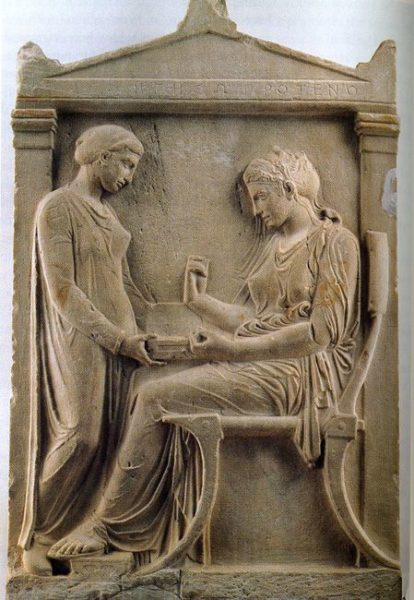 Grave Stele of Hegeso, c. 410 B.C.E., marble and paint, from the Dipylon Cemetary, Athens, 5' 2
Grave Stele of Hegeso, c. 410 B.C.E., marble and paint, from the Dipylon Cemetary, Athens, 5' 2
A stele is a tall slab made of wood or stone that typically is used as a grave marker. Sometimes people in ancient civilizations used stele as a boundary marker to ward off evil.
Steles often were sculpted with images of the deceased, as is one of the most famous examples from Ancient Greece, the Grave Stele of Hegeso, who is the woman that appears seated on the right. Her servant at the left hands her a jewelry box. In this solemn scene, Hegeso originally held a necklace (painted) in her hand that she selected for her final journey to the Underworld.
The style is Classical Greek and the sculpture was discovered just outside the city gates of Athens. The idealized form of the bodies and the cascading drapery are similar to what we see in the sculptures that appear in the frieze on the Parthenon.